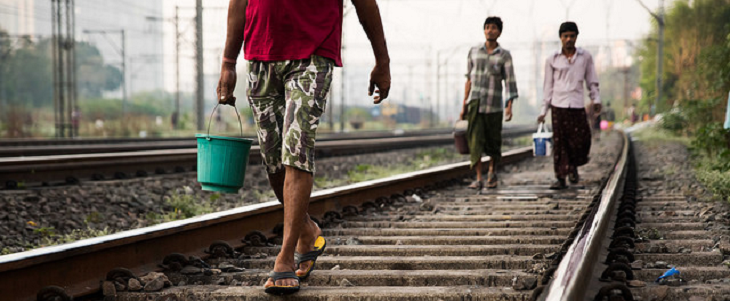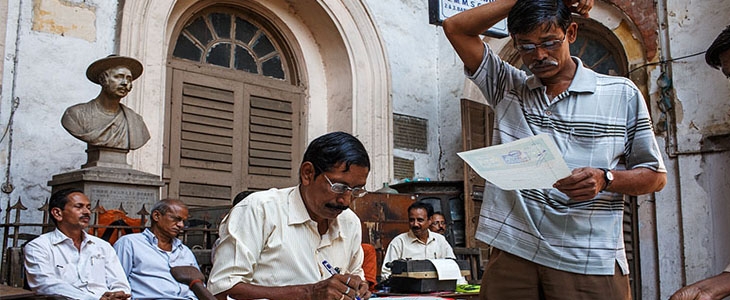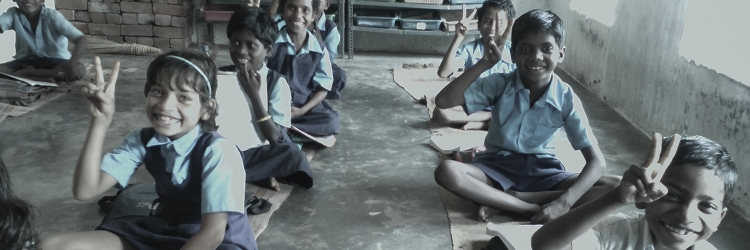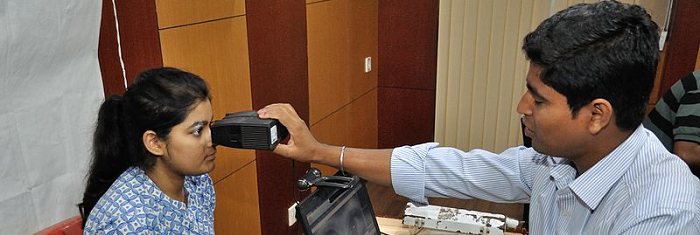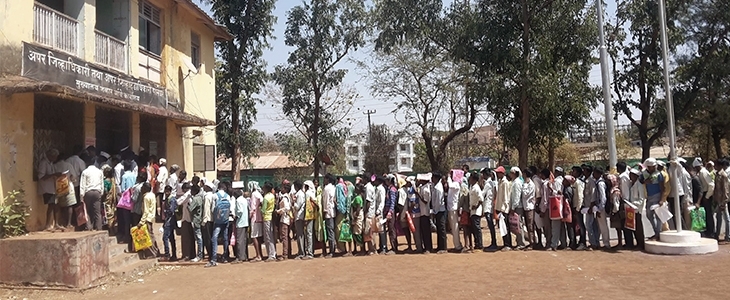पिछले कई वर्षों से भारत में स्वच्छता से सम्बंधित अनेक योजनाओं को अमल में लाने की कोशिश की जा रही है। मौजूदा प्रधानमंत्री ने भी इस विषय की गंभीरता को देखते हुए 2 अक्टूबर 2014 को उसकी चुनौतियों के समाधान हेतु स्वच्छ भारत मिशन की शुरुआत की। केंद्र सरकार का यह प्रमुख कार्यक्रम महात्मा गांधी की 150वीं जयंती के उपलक्ष्य में स्वच्छ भारत का सपना साकार करना चाहता है।यह भारत सरकार का सबसे बड़ा स्वच्छता कार्यक्रम है अतः भारत की अधिकतर राज्य सरकारों ने इस कार्यक्रम को प्राथमिकता दी है यह कहना गलत नहीं होगा। कार्यक्रम की प्रगति से जुड़े अनेक विवाद देखने मिलते हैं, पर अधिकतर आकड़ों में ही उलझे रहते हैं। यदि इस महत्वाकांक्षा को संभव बनाना है तो इन संख्यात्मक तथ्यों के भीतर की वास्तविकता को समझना होगा।
इस उद्देश्य से, स्वच्छ भारत मिशन एवं उसकी क्रियान्वयन कि प्रक्रिया का अध्ययन करने के लिए हमने दिसम्बर 2015 को हिमाचल प्रदेश के 2 जिलों के 60 गाँव के कुल 1,500 घरों का सैंपल सर्वेक्षण आयोजित किया। सर्वे के बाद हमारे पास इस योजना से सम्बंधित कुछ चिंताजनक मुद्दे सामने आये।
दिसंबर 2015 तक सर्वे के लगभग 10% ही घरों में स्वच्छ भारत मिशन के अंतर्गत शौचालयों का निर्माण हुआ था। हैरानी वाली बात तो यह थी कि सर्वे के 50%पात्र घरों के अनुसार उन्होंने शौचालय अनुदान के लिए कभी आवेदन ही नहीं किया क्योंकि उनको इसके बारे में कोई जानकारी ही नहीं थी। 90% से अधिक लोगों का कहना था कि इस विषय पर पंचायत द्वारा न तो कोई जागरूकता शिविर लगाया गया और न ही कोई उनके घर पर जानकारी देने आये। इसके फलस्वरूप कई घरों में शौचालयों की कमी पाई गयी और लोग खुले में शौच कर रहे थे।
इन जाँच परिणामों को हम सरकार के साथ साझा करना चाहते थे ताकि योजना में चल रही कमियों को पूरा किया जा सके और इस सन्दर्भ में हमने एक जिले के उपायुक्त से चर्चा की। अपनी उत्सुकता दिखाते हुए जिला उपायुक्त ने सभी विभागों के अधिकारीयों की उपस्थिति में हमें अपने आंकड़े प्रस्तुत करने की अनुमति दी। सर्वे की विश्वसनीयता को सही ठहराते हुए इसके आधार पर सभी विकास खंड अधिकारियों को जल्दी से जल्दी काम पूरा करने के निर्देश दिए।
इस दौरान मीडिया के माध्यम से हिमाचल सरकार राज्य को बाह्य शौच मुक्त (ओडीएफ) बनाने की बात कह रही थी। जून 2016 में सरकार ने सभी जिलों को शेष शौचालयों को पूरा करने के निर्देश दिए और राज्य को 2 अक्टूबर 2016 तक ओडीएफ घोषित करने का लक्ष्य निर्धारित कर दिया, हालाँकि लक्ष्य पहले 31 मार्च 2017 तक का रखा गया था। राज्य से लेकर ब्लॉक स्तर तक समितियां बनायीं गयी और हर स्तर के सभी अधिकारी इस अभियान को सफल बनाने में जुट गए।
आखिरकार, 28 अक्टूबर 2016 को हिमाचल प्रदेश खुले में शौच मुक्त दूसरा प्रदेश बना। सरकार के मुताबिक़ हिमाचल प्रदेश के सभी 12 जिलों के सभी 78 विकास खंडों की 3,226 पंचायतों के सभी 18,465 गांव खुले में शौचमुक्त हैं। राज्य के कुल 14,83,562 घरों में शौचालय हैं, अर्थात हिमाचल में अब कोई भी व्यक्ति खुले में शौच नहीं कर रहा था।
हमने नवम्बर 2016 में दुबारा अपने सैंपल में से 10 गाँव में हुए परिवर्तन को जांचने का निर्णय लिया। बाह्य शौच मुक्त घोषित होने के बाद यह पाया गया कि अधिकतर गाँव में शौचालयों के निर्माण में बढ़ोत्तरी तो हुई मगर अभी भी कई शौचालय बने ही नहीं थे और कुछ तो बिलकुल अधूरे पड़े हुए थे।
जब हमने लोगों से इसके बारे में जानना चाहा तो उनका कहना था,“पंचायत ने कहा था कि कम से कम गढ्ढे खोद लो ताकि यह लगे कि शौचालय बन रहे हैं”। घोषणा के बाद जैसे ही सरकारी दबाव कम हुआ तो लोगों में भी शौचालय बनाने की कोई उत्सुकता नहीं दिखाई दी। किसी ने पैसे के आपूर्ति की दुहाई दी तो किसी ने पानी की कमी को दोषी ठहराया। उन्होंने हमें साफ़ बताया कि वे शौच के लिए अभी भी बाहर जा रहे थे। तो ऐसे में सवाल यह उठता है कि फिर किस बात का बाह्य शौच मुक्त राज्य?
अधिकारीयों से जब हमने इसके कारण समझने चाहे तो सरकार द्वारा उनके ऊपर भी दबाव साफ़ तौर पर दिखाई दिया। एक ब्लॉक अधिकारी का कहना था,“इस पूरे अभियान को जल्दबाजी से किया गया। यदि इसके लिए और समय होता तो इसे अच्छे तरीके से किया जा सकता था, सरकार ने अपने राजनितिक स्वार्थों की वजह से इसे हमारे ऊपर थोपा है”। कई अधिकारीयों का कहना था कि उनके पास पर्याप्त स्टाफ और साधन नहीं थे और साथ ही समय भी कम दिया गया।
एक सरपंच ने अपनी हताशा को जताते हुए कहा,“पता नहीं क्यों सरकार को ओडीएफघोषित करने की इतनी जल्दबाजी थी, अभी भी बहुत से गाँव ऐसे हैं जहाँ पर आधे से अधिक घरों में शौचालय बनने को शेष होंगे या फिर अधूरे होंगे।हमें बार-बार गाँव में जाकर शौचालय एवं सफाई का निरिक्षण करना पड़ेगा तभी इसका असर वास्तविक रूप में दिखेगा अन्यथा इस ओडीएफ होने का क्या औचित्य है”। ये समस्याएं केवल एक जिले या प्रदेश तक सीमित नहीं हैं। अन्य राज्यों से भी ऐसी ही जल्दबाजी और लापरवाही की कहानियां मीडिया में आती रहती हैं। ऐसे में कुछ महत्वपूर्ण प्रश्न उभरते हैं।
जाहिर है कि स्वच्छता को केवल गड्ढे खोदने से प्राप्त न हीं किया जा सकता और ऐसा व्यापक सामाजिक बदलाव दबाव और जल्दबाजी से संभव नहीं। राज्य को सबसे पहले बाह्य शौच मुक्त घोषित करने की होड़ में जमीनी स्तर पर बहुत सारी जो कमियां रह जाती हैं उनकी भरपाई किस तरह से हो पाएगी यह एक बड़ा प्रश्न आज भी है। ज्यादातर देखा गया है की ओडीएफ घोषणा के बाद स्वच्छता सम्बंधित काम रुक जाते हैं। इन्ही कारणों से एक और अनिवार्य प्रश्न यह भी उठता है की स्वछाग्रह का अर्थ क्या है? क्या हम यह आग्रह कर रहे हैं कि हमें स्वच्छ होना चाहिए या कि हम स्वच्छ हो चुके हैं? स्वच्छ भारत की परिभाषा और सम्भावना, दोनों ही इस उत्तर पर निर्भर है।


